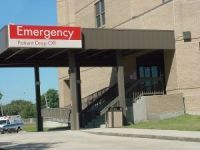Article
Teriflunomide Reduces Relapse-Related Sequelae, Hospitalizations and Corticosteroid Use in Multiple Sclerosis Patients
Author(s):
Compared with placebo, teriflunomide was shown to significantly reduce the occurrence of relapses with sequelae and relapses treated with corticosteroids in a post-hoc analysis of pivotal clinical trial data.

While a post-hoc analysis of the pivotal phase 3 TEMSO clinical trial previously showed that teriflunomide reduced annualized relapse rates (ARR) with residual deficits such as sequelae and relapses requiring health care resources, a second phase 3 TOWER trial revealed that daily 7 mg and 14 mg doses of teriflunomide significantly reduced ARR by 36.3% (p=0.0001) and 22.3% (p=0.0183), respectively, compared to placebo in patients with relapsing forms of multiple sclerosis (MS).
Outcomes in that study were consistent with the TEMSO findings, though a post-hoc analysis similar to the one performed on the TEMSO data has since been carried out on the TOWER data to determine the effect of teriflunomide on relapse-related neurologic sequelae and relapses requiring health care resources.
Paul O’Connor, director of the Multiple Sclerosis Clinic and MS Research at St. Michael's Hospital, in Canada, gave a poster presentation on those results at the American Academy of Neurology (AAN) 2013 Annual Meeting’s Multiple Sclerosis: Clinical Trials Outcomes session.
The TOWER trial was a randomized, double-blind, placebo-controlled, parallel-group study (N=1169) that analyzed the following four outcomes in the intent-to-treat population (N=1165): relapses with neurological sequelae, defined by an increase in Expanded Disability Status Scale (EDSS)/Functional Score (FS) 30 days post-relapse (sequelae-EDSS/FS) or as determined by the investigator (sequelae-investigator); relapses leading to hospitalization; relapses treated with intravenous corticosteroids; and the number of hospital nights for relapse. Annualized rates for each outcome were derived using a Poisson model with robust error variance that used treatment, baseline EDSS strata and region as covariates.
O’Connor and his fellow investigators reported that teriflunomide significantly reduced annualized rates of relapses with sequelae-EDSS/FS [33.0% with 14 mg (p=0.0081); 26.4% with 7 mg (p=0.0315)] and sequelae-investigator [53.5% with 14 mg (p=0.0004)] relative to placebo. Relapses leading to hospitalization were also reduced [33.6% with 14 mg (p=0.0155)] as were relapses treated with IV corticosteroids (35.7% with 14 mg (p=0.0002); 21.5% with 7 mg (p=0.0337)]. In addition, patients treated with 14 mg of teriflunomide spent significantly fewer hospital nights per relapse (1.7 versus 3.4 for placebo; p=0.0285).
In summary, compared with placebo, both doses of teriflunomide significantly reduced the occurrence of relapses with sequelae-EDSS/FS and relapses treated with IV corticosteroids. Teriflunomide in 14 mg daily doses also significantly reduced relapses with sequelae-investigator and relapses leading to hospitalization.
O’Connor and his colleagues argue that those results — together with similar findings from the post-hoc analysis of TEMSO data — suggest that teriflunomide may reduce MS relapse-related health care costs. O’Connor highlighted the more robust therapeutic effect of the 14 mg dose was consistent with the response to certain clinical endpoints in the TEMSO trial.
2 Commerce Drive
Cranbury, NJ 08512
All rights reserved.



